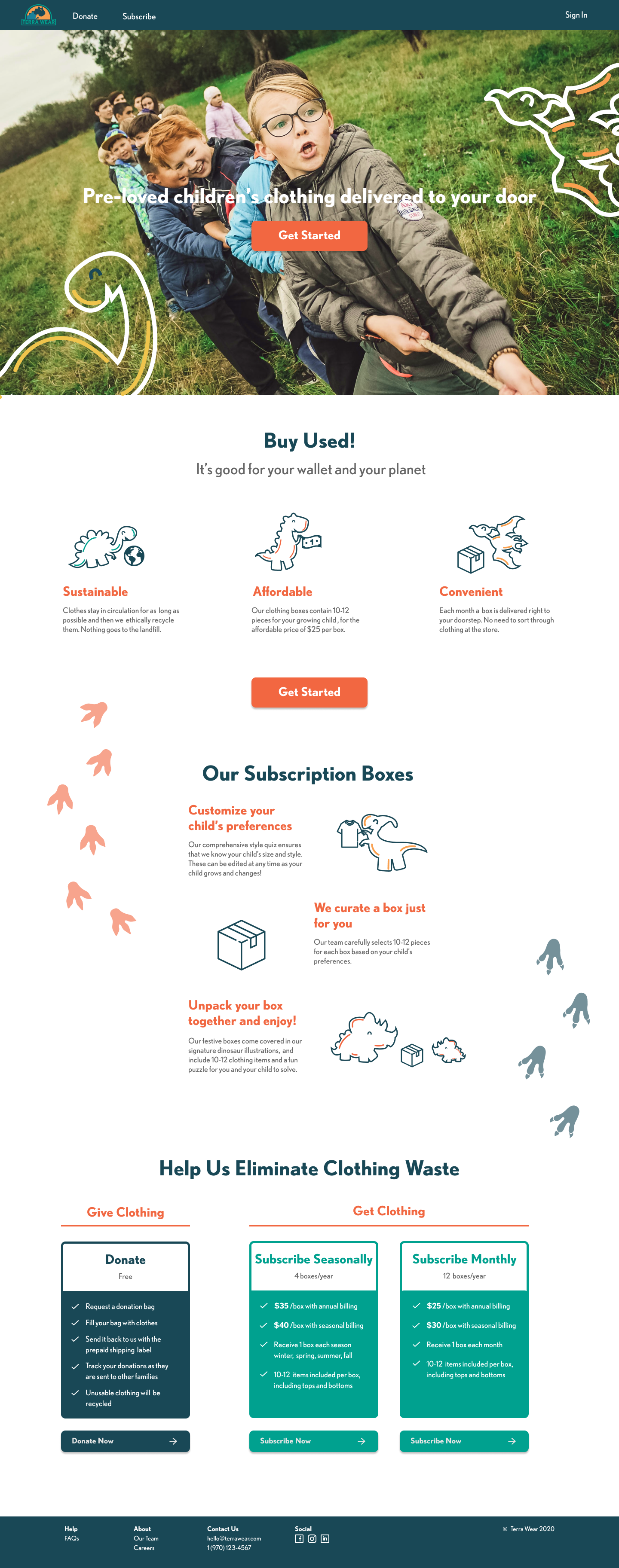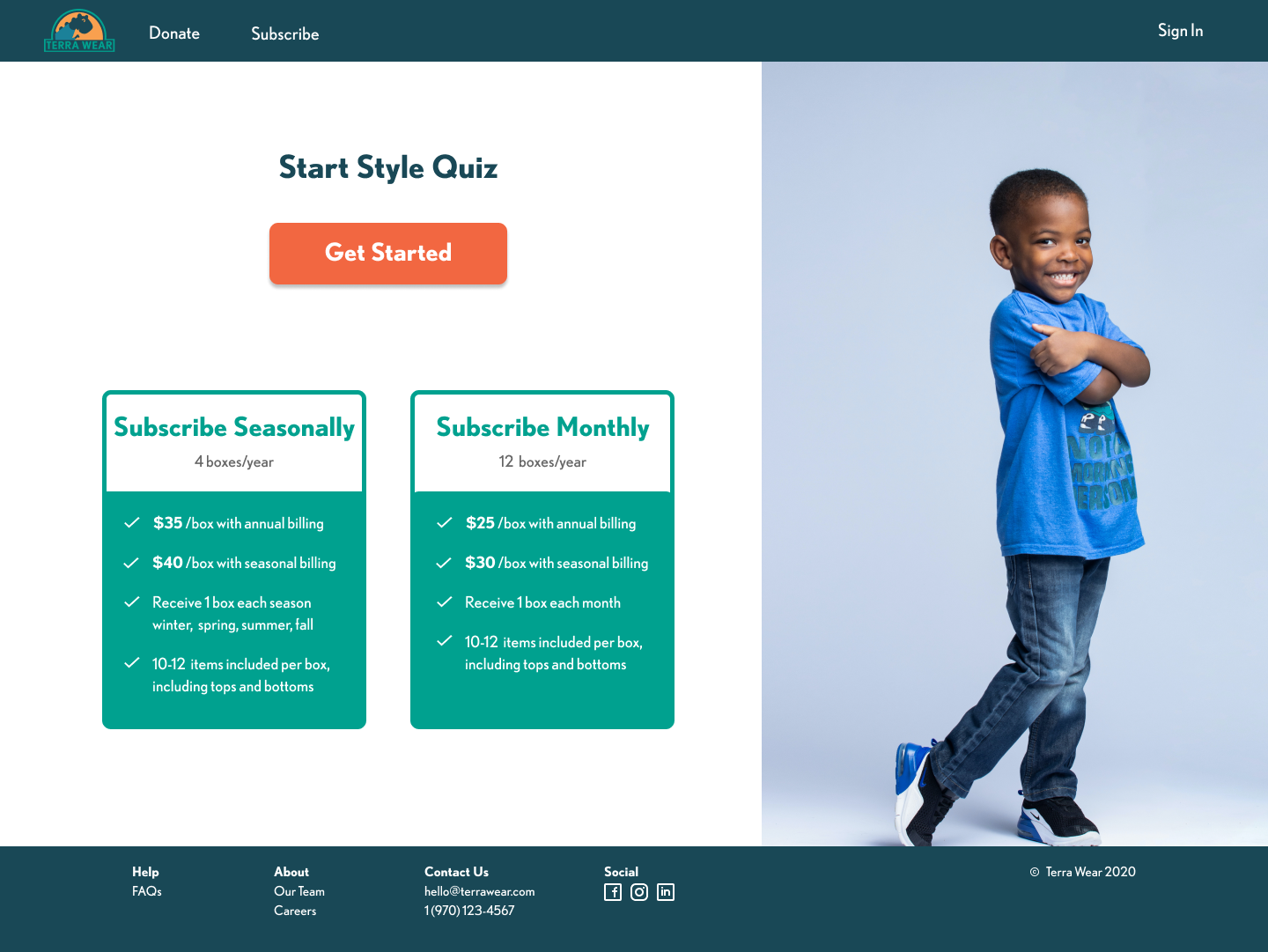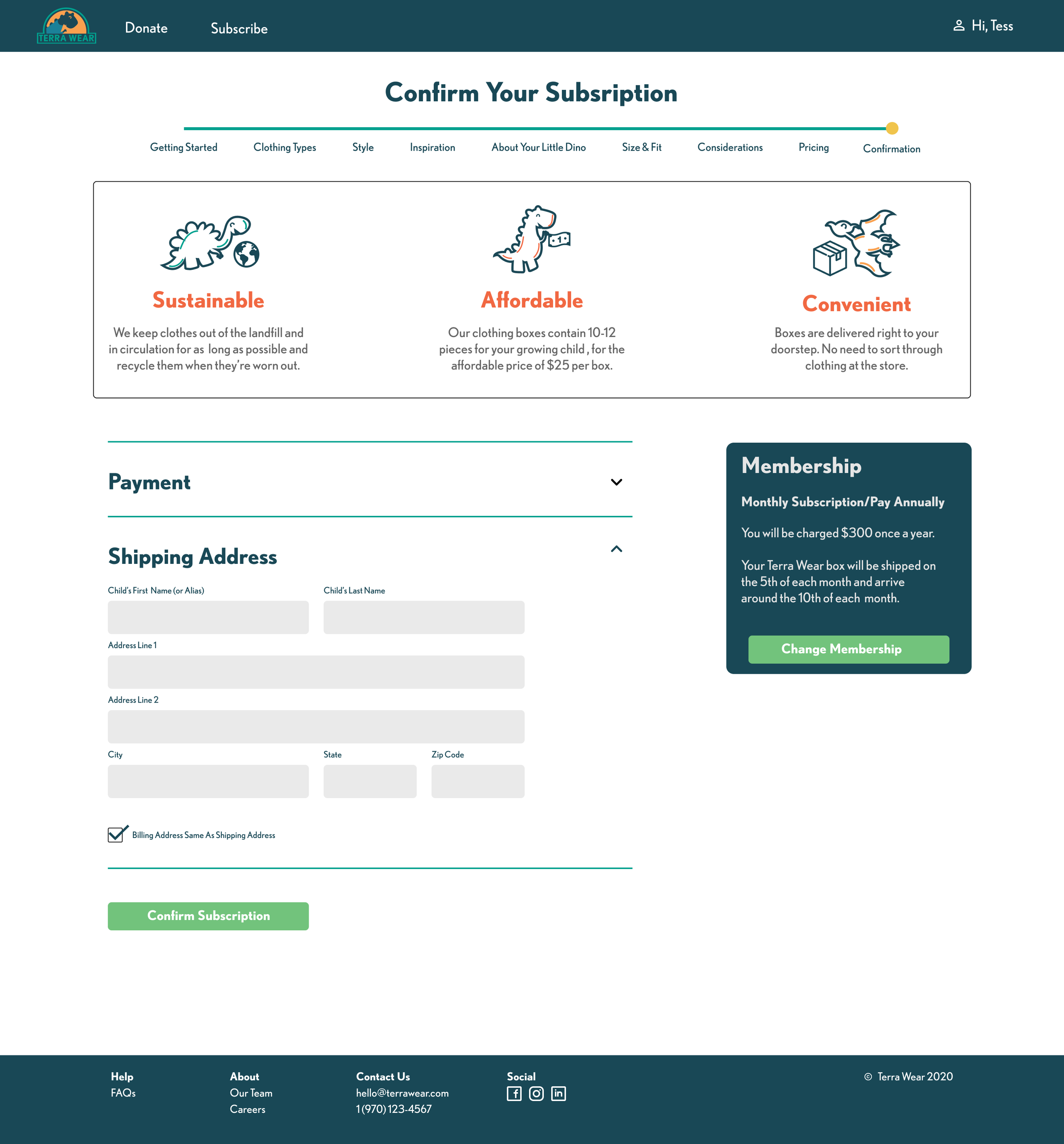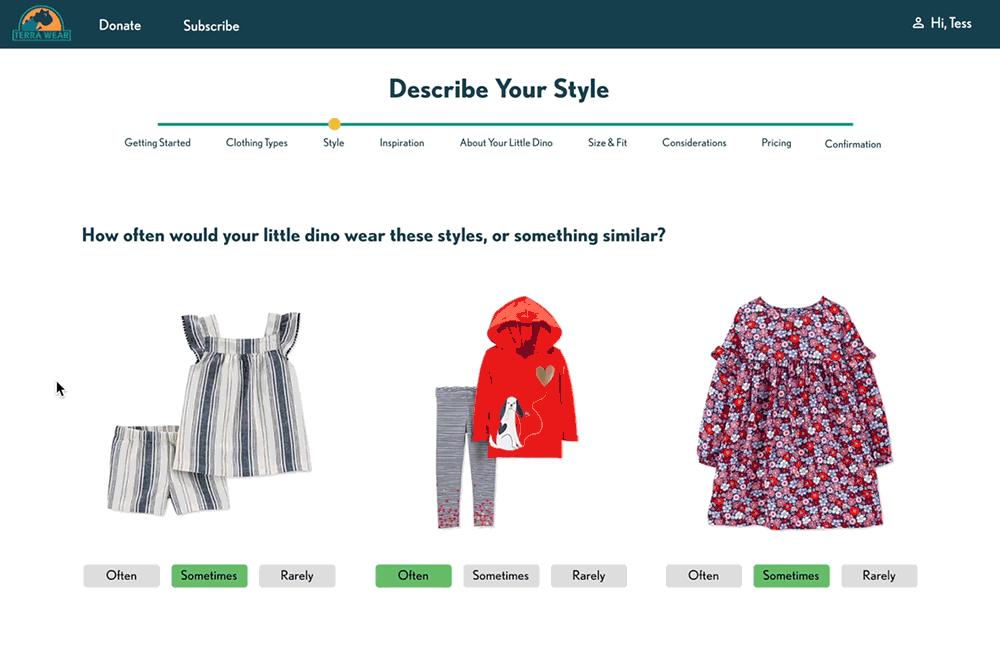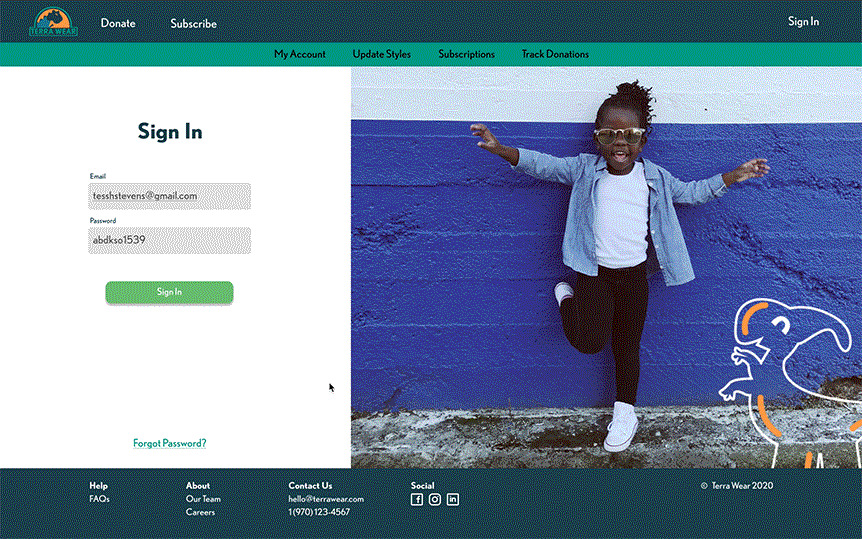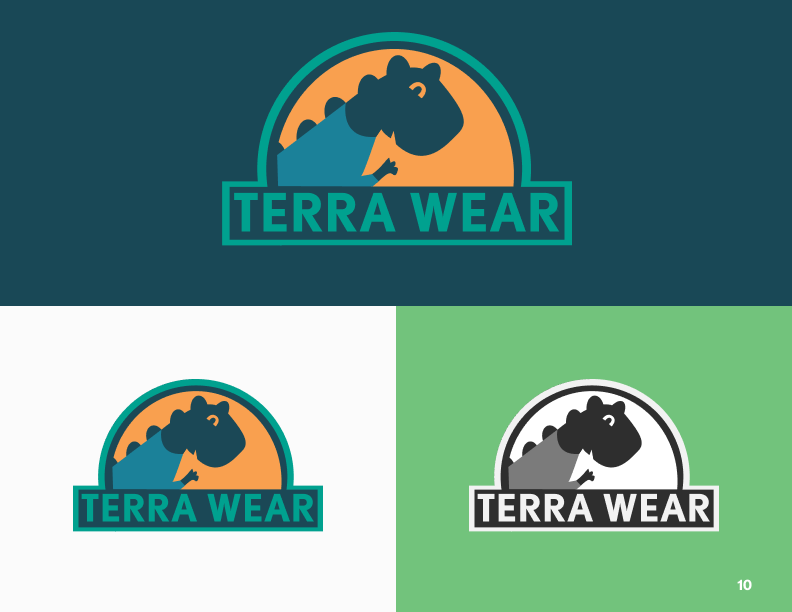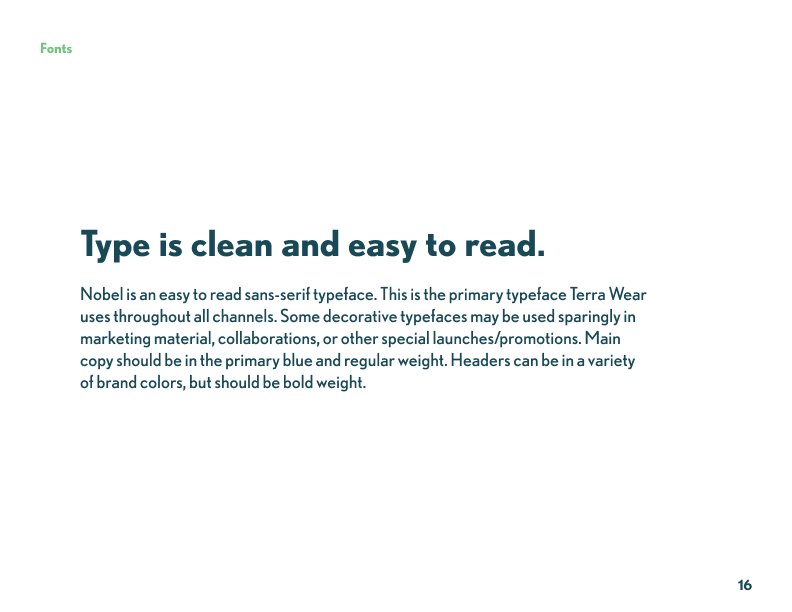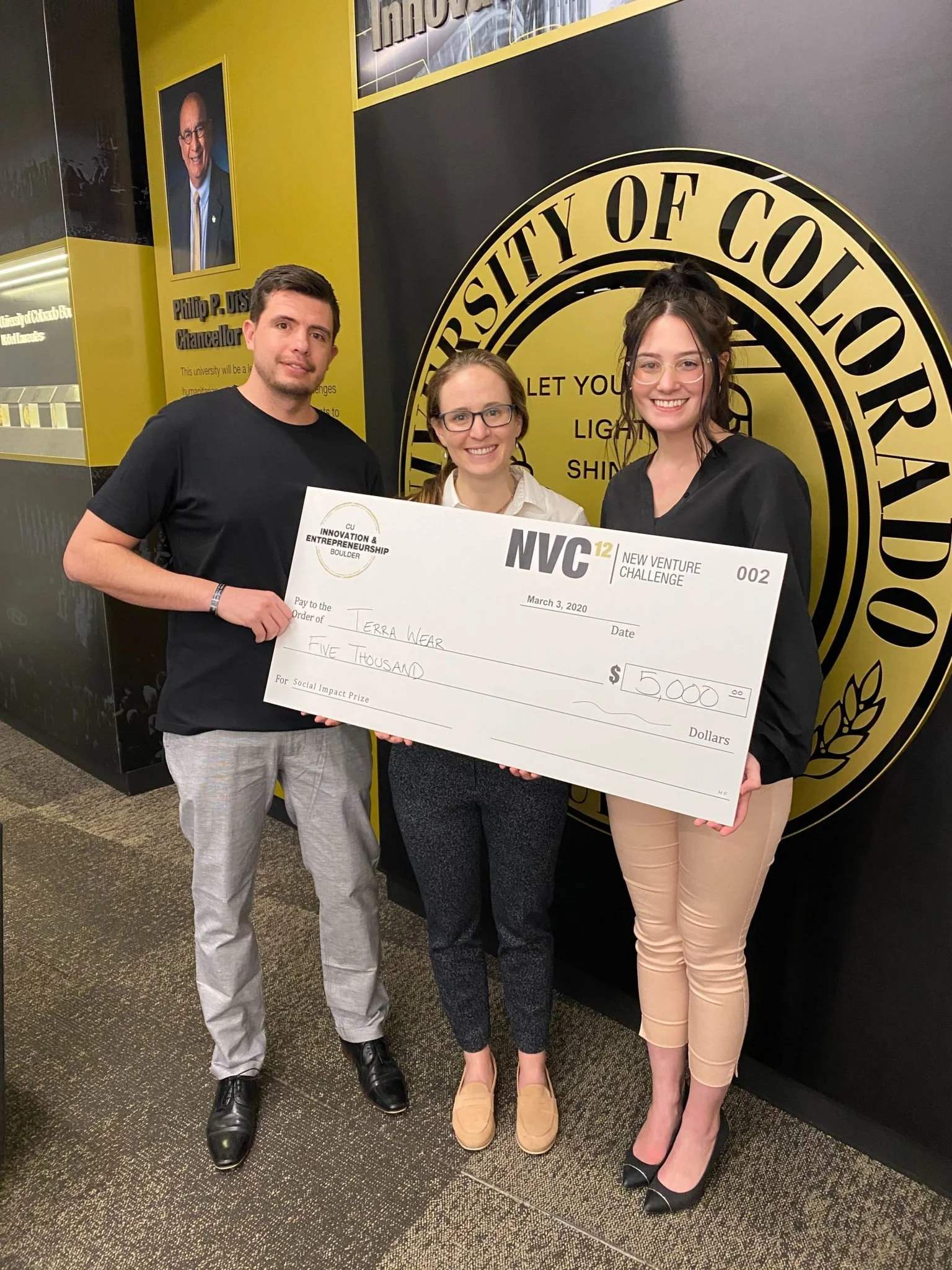Terra Wear
Cap Stone Turned LLC
D2C - iOS / Android / Web - 2020
My Role - Product Design, User Research, User Interviews, Journey Mapping, Sketching, Wire framing, Screen Flows, Visual Design, Interaction Design
Other People In Group - Vanessa Frye, Tess Stevens
Embarking on my capstone project for graduate school, I delved into a seemingly whimsical notion: how could we revolutionize the sustainability landscape using the principles of product design? Little did I know that this seemingly fanciful idea would evolve into a tangible and impactful venture. Through innovative thinking and a deep commitment to sustainable practices, our team transformed this academic pursuit into a fully-fledged LLC. The journey wasn't without its challenges, but our dedication paid off as we secured venture funding from local VC firms, proving that even the most ambitious ideas can find their place in the real world. Join me on this transformative journey where academic curiosity meets entrepreneurial reality, shaping a narrative that goes beyond the conventional bounds of a capstone project.
How might we create a sustainable and user-friendly system that transforms gently used children's clothing donations into a subscription-based model, fostering a circular economy that benefits both contributors and subscribers while reducing clothing waste.
Terra Wear
What is it?
A subscription-based children's apparel enterprise dedicated to fostering sustainable consumer practices and minimizing clothing waste in landfills. Our mission revolves around assisting families in making environmentally conscious clothing choices for their children by offering a subscription-based clothing service. Through this model, we collect gently used clothing from families who no longer require them, subsequently making them available to others through a subscription-based platform.
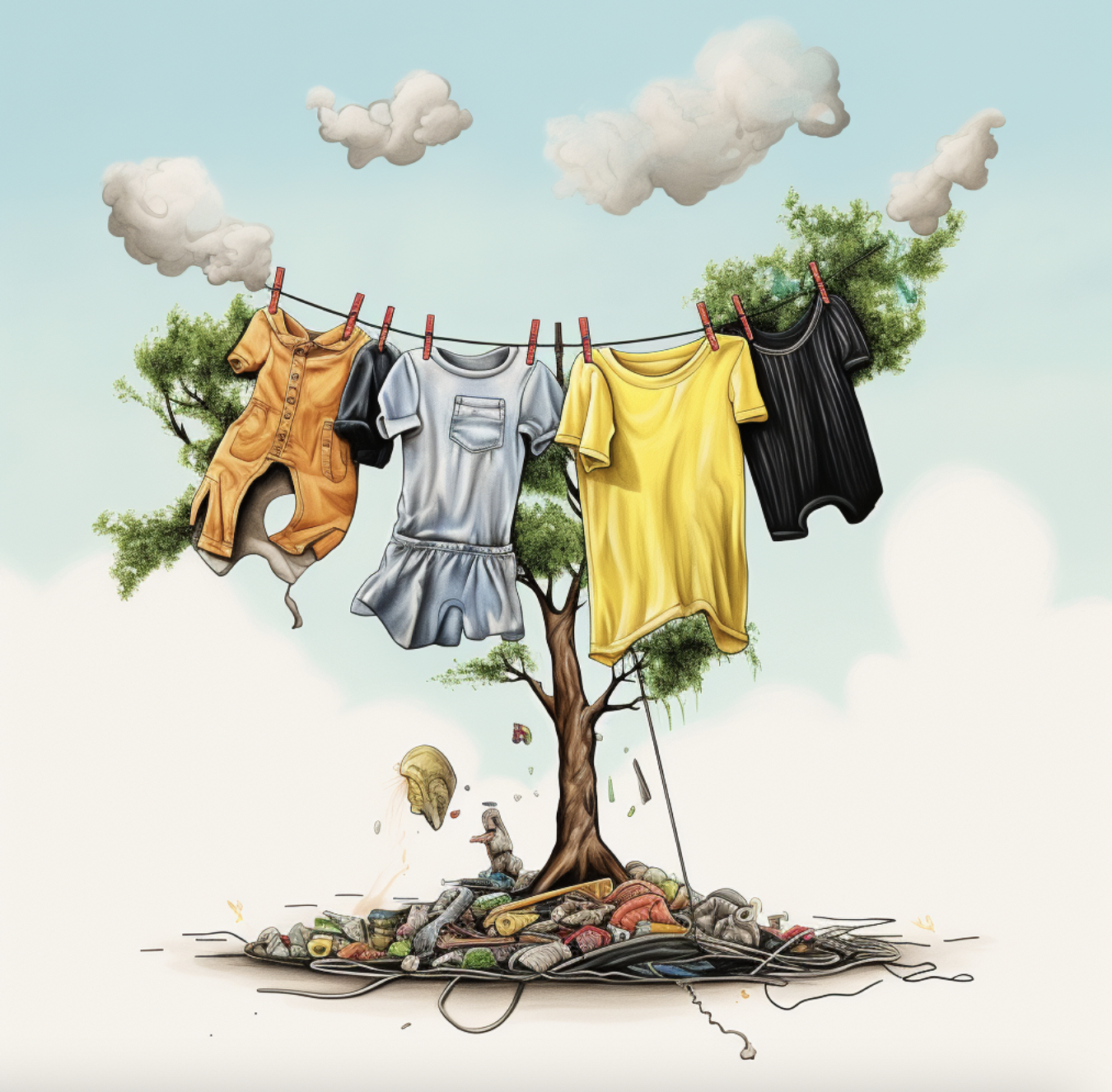
An Idea Was Born
The concept of a sustainable clothing cycle emerged during the early stages of quarantine when my one-year-old son seemed to outgrow his clothes faster than we could acquire them. Faced with a surplus of clothing that held no sentimental value, it struck me that there must be countless other parents in a similar predicament. The idea of transforming this surplus into a subscription-based model took root as a solution to both declutter our living space and contribute to a more sustainable, community-driven approach to children's clothing. This initial spark led to the development of a concept that not only addressed our personal needs but also resonated with the broader goal of fostering a circular economy.
The Opportunity
If, like many families across the U.S., you find yourself grappling with the challenge of unused children's clothing accumulating at home, you are not alone. The issue of surplus clothing from children who have outgrown their apparel is a prevalent concern amid escalating trends in clothing consumption. As children grow rapidly during their developmental years, the surplus clothing often contributes to an alarming amount of textile waste in landfills. This not only places a financial strain on families constantly purchasing new sizes but also results in unnecessary environmental impact, with clothing being discarded before reaching the end of its usable life. Addressing this issue requires a thoughtful and sustainable solution that aligns with contemporary consumption patterns.
Proof Of Concept
The initial step in this endeavor involved conducting a proof of concept to ascertain the extent of the issue and understand if other families encountered similar challenges. Our focus during this phase was on key areas identified through rigorous business model analysis. Questions such as the disposition of children's clothing after outgrowing it, the likelihood of purchasing used children's clothing, and the ideal solutions respondents envisioned for managing outgrown clothing were central to our investigation. We delved into inquiries about potential donation preferences and sought insights into the efficacy of existing clothing management systems. This phase aimed to provide a comprehensive understanding of the pain points families face when dealing with outgrown children's clothing and laid the foundation for designing a sustainable solution.
Jobs To Be Done
Moderated Testing
Surveys
This May Actually Work
Based on the insights garnered from the proof-of-concept testing, we categorized our findings into three distinct focal points: Convenience, Affordability, and Customization. Families, recognizing their busy schedules, highlighted the need for a solution that prioritizes convenience. Recognizing the time-consuming nature of donating and purchasing clothing, we aimed to streamline processes, ensuring that downtime is maximized for quality family moments. The financial strain posed by children's rapid growth became evident, prompting a focus on Affordability. Acknowledging that children typically go through an average of seven sizes in their first three years, we envisioned a platform that alleviates the financial burden by promoting the purchase of gently used clothing. Lastly, under the category of Customization, we recognized that families are willing to relinquish control over hand-selecting clothing if provided with some influence and input on style preferences from the outset. These three pillars guided our approach to designing a solution that seamlessly integrates into the lives of families, addressing key pain points identified during the initial phase.
Convenience
Families are busy, donating and buying clothing is time-consuming. We want to prioritize convenience and make sure your down time is spent with your family.
Customization
Families are willing to let go of control on hand selecting clothing if they are given some control and style input in the beginning
Affordability
Children grow an average of seven sizes in the first three years of life. The financial burden this places on families will be alleviated by buying used when possible.
How The Magic Happens
The Proof Is In The Pudding
Our operational model follows a closed-loop structure designed for efficiency and sustainability. On one side of the system are our donors—parents with surplus children's clothing. To initiate the process, donors can access the platform, request a collection bag, and have it delivered to their doorstep. Upon receipt, they can fill it with their clothing donations and return it to us. Subsequently, we undertake the responsibility of laundering, organizing, and preparing the clothes for redistribution. On the other side of the loop are our subscribers—parents who engage with our platform to curate clothing for their children. Subscribers log in, provide details on their child's sizes and preferences using our subscription flow, and receive a personalized clothing box periodically, based on their subscription preferences. The subscribers have the flexibility to retain the clothing for as long as needed. However, when they decide to pass it on, they can return it to us, closing the loop and allowing for the ethical disposal of the clothing. This closed-loop system ensures a seamless and sustainable process for both donors and subscribers.
Lets Push Some Pixels
Armed with valuable insights gained from the proof of concept phase, we seamlessly transitioned into the design phase of our sustainable clothing initiative. These insights, categorized into three distinct areas—Convenience, Affordability, and Customization—served as the guiding principles for our design framework. We meticulously crafted our model to prioritize convenience, recognizing the busy lifestyles of families, while also addressing the financial burden placed on them due to the rapid growth of children. Affordability became a focal point, emphasizing the importance of providing an economical solution through the purchase of used clothing. Additionally, our design phase acknowledged the significance of customization, allowing families to retain some control and influence over the style inputs of their clothing selections. The synthesis of these insights guided our design decisions, ensuring that our solution aligned with the identified pain points and preferences of our target audience.
Customization Is Key
Informed by the insights emphasizing the significance of customization, our research and competitive analysis underscored the pivotal role that user input plays in subscription-based services. Recognizing that meaningful user engagement hinges on providing subscribers with control over the curation of their clothing boxes, we dedicated efforts to develop an innovative solution. The culmination of this endeavor was the creation of a comprehensive style quiz that delves into every facet of a child's clothing preferences. This quiz extends beyond conventional considerations of color and style, encompassing nuanced aspects such as sensory concerns. By integrating this detailed style quiz into our subscription flow, we aimed to empower parents with the ability to tailor the clothing selections to align precisely with their child's unique preferences, ensuring a highly personalized and satisfying experience.
Frequency
Building on the insights gleaned from previous requests, particularly the emphasis on customization and user preferences, we translated these findings into a robust subscription model that prioritizes flexibility and choice. Acknowledging the diverse needs and preferences of our subscribers, we implemented a system where users have the autonomy to determine the frequency of their clothing boxes. Subscribers can opt for a monthly box priced at $25, offering a steady stream of curated items tailored to their child's preferences. Alternatively, for those seeking a more seasonal approach, we introduced an option for a $40 box, curated to align with the specific clothing needs dictated by the prevailing season in their geographical location. This tiered subscription approach caters to the varying preferences and lifestyle choices of our user base, ensuring a personalized and adaptable experience for each subscriber.
Trackable
In response to the valuable insights gathered, we recognized the significance of instilling a sense of user delight and transparency in the donation process. Understanding that many users hesitated to contribute to traditional donation drop boxes due to concerns about the impact and utilization of their contributions, we sought to address this barrier by incorporating a tracking feature into our service. Upon receiving clothing donations, each item is tagged with a unique and identifiable number tied to the contributing family. Subscribers can then access their personalized dashboard, offering them the ability to trace the journey of each donation. This innovative tracking feature not only ensures transparency in the donation process but also allows users to witness the tangible impact of their contributions, fostering a sense of connection and satisfaction in knowing that their donations are reaching those in need.
Balancing User Needs With Building A Business
Embarking on our journey from ideation to the establishment of a fully operational business, Terra Wear emerged as a trailblazing subscription clothing swap, transforming pre-loved garments into re-loved fashion. The seeds of this venture were sown in 2019 when our team recognized a compelling opportunity to empower families to embrace sustainability effortlessly. Motivated by the belief that sustainable living should be accessible and affordable, we conceptualized a service to address the issue of clothing waste. In a span of just 7 months, we transitioned from a blue-sky idea to a fully formed and operational Limited Liability Company (LLC). Our mission evolved from curbing clothing consumption to becoming a pioneering used children's clothing company that breathes new life into pre-loved garments, fostering a community committed to sustainable and conscious consumption.
By Golly I Think We Did It
How It All Ended
Navigating the vast expanse of a "blue sky" prompt can be a daunting task, with myriad possibilities stretching into the horizon. However, we embraced the challenge of designing for social impact and channeled our passions throughout our year-long journey. By the seventh month, we successfully transformed our abstract blue sky into a vibrant green, embodying our commitment to environmental consciousness. This transformation culminated in the establishment of an LLC, a significant milestone achieved after being honored with CU Boulder's prestigious Environmental Impact award during the 2020 New Venture Challenge. Our dedication to making a positive difference in the world was not only recognized but also fueled the trajectory of our endeavor towards creating meaningful environmental impact.

